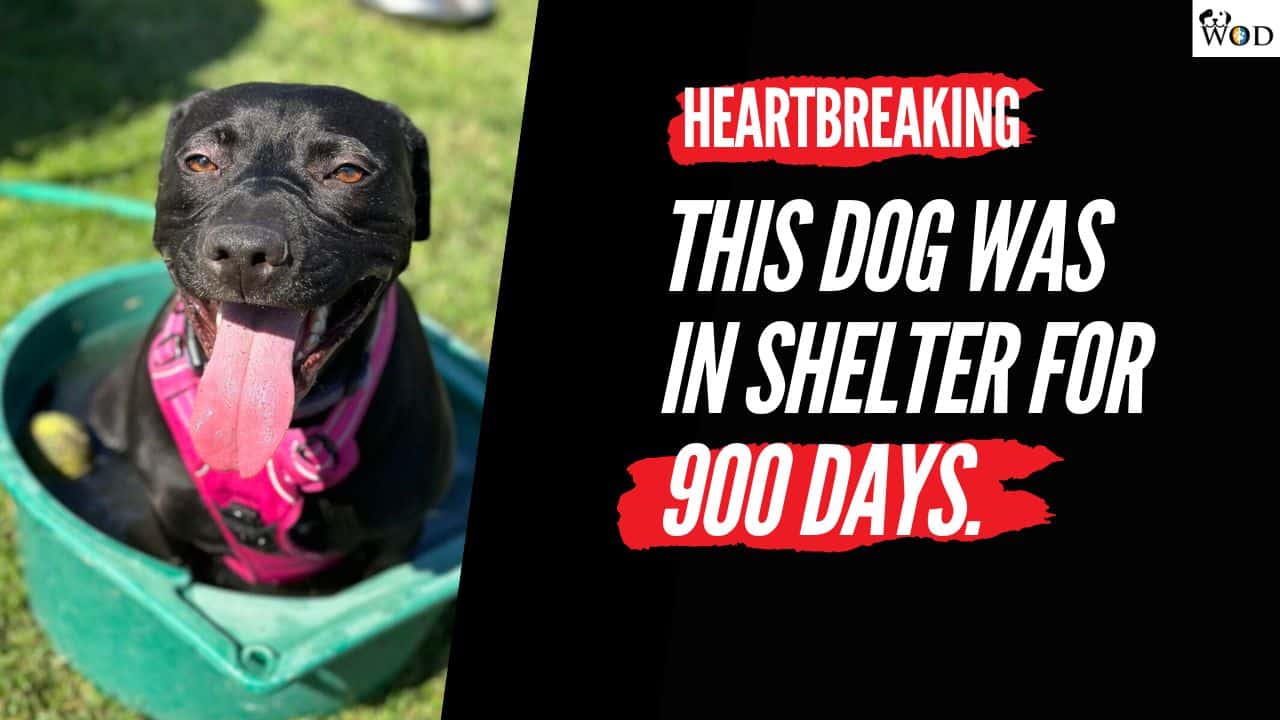If you’re a German Shepherd owner like me, you’ve likely faced the common yet frustrating issue of your furry friend’s incessant chewing.
As a dedicated pet parent and seasoned German Shepherd enthusiast, I’ve navigated the challenging waters of knowing how to stop a German Shepherd from chewing.
Here’s the short answer…
To stop a German Shepherd from chewing, provide chew toys and engage in regular exercise. Train with firm, consistent commands and redirect chewing to appropriate items. Address any separation anxiety and ensure they have a stimulating environment. Regular mental and physical stimulation is key.
In this blog, I’ll share my personal journey and effective strategies to help you stop your German Shepherd from chewing, transforming this troublesome habit into a thing of the past.
We will explore tried-and-true methods, ensuring a happier, chew-free home for you and your fur baby.
Key Takeaways
- Implement consistent training and positive reinforcement to modify your German Shepherd’s chewing behavior.
- Select appropriate chew toys to redirect chewing instincts and keep your dog engaged.
- Address underlying issues like lack of exercise and separation anxiety to prevent destructive chewing habits.
Continue reading to unlock the secrets to a more peaceful coexistence with your German Shepherd!
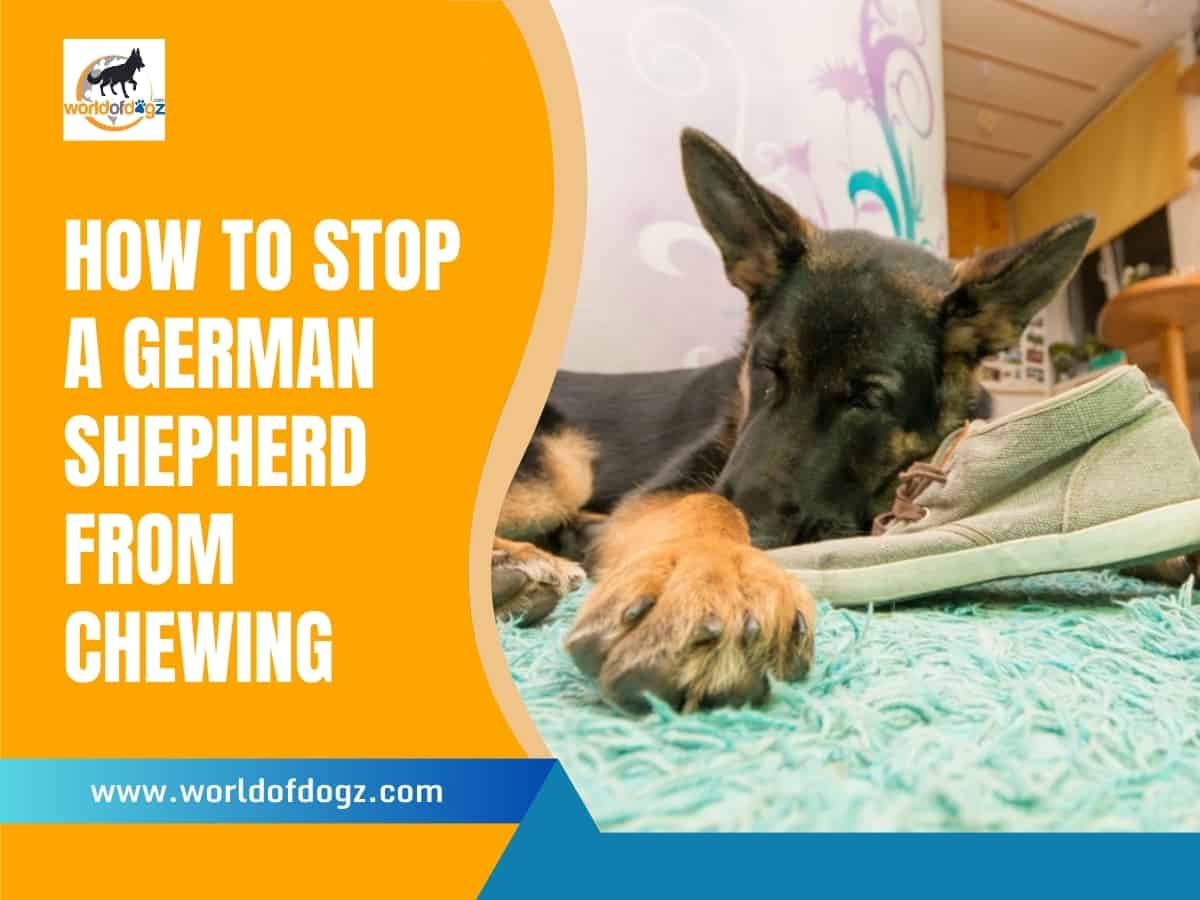
Causes of Destructive Chewing
Firstly, let’s look at why your German Shepherd chews.
Chewing to relieve the discomfort from teething in puppies or strengthen teeth and jaws in adult German Shepherds is normal canine behavior.
But chewing becomes abnormal and destructive if it takes the following patterns:
- Your German Shepherd is six months of age or older and, therefore, not teething but is still manifesting excessive chewing behavior.
- When your GSD chews any object in your home, including valuable objects such as couches, bed pillows, and furniture.
- When your GSD chews to the point of causing harm to himself, which could be symptomized by vomiting, diarrhea, bloodstains on his toys, loss of appetite, or a general condition of inactivity and low energy after chewing stuff.
- When your German Shepherd is chewing non-stop for the entire day and will even resist your calls to engage in other activities such as play or the daily walks.
- Your GSD is overly protective of his chew toys and becomes aggressive if they are touched or taken away.
Here’s a video explaining exactly why dogs need to chew and the benefits chewing brings:
So, what causes your German Shepherd to turn to destructive chewing? Let’s explore…
1. Lack of Proper Training/Untamed Instinct
As indicated earlier, chewing is an instinctual and normal exploratory behavior in dogs. You should not worry if your dog chews within normal limits.
But a German Shepherd who chews everything in their way does not exhibit normal chewing behavior.
To keep chewing within normal levels in your German Shepherd’s adult life, tame his instinct to chew by training him not to chew things he’s not supposed to.
He should readily heed a “NO” when he attempts to chew your slippers or the cushions on the couch while he’s still a puppy.
2. Anxiety
Anxiety in dogs is a common occurrence and can take different forms. The most common forms of anxiety in dogs are:
- General fearfulness (toward unfamiliar dogs, people, objects, or new situations).
- Noise sensitivity (also known as “noise phobia” and does not include extreme noise from thunderstorms, gunshots, fireworks, and the like).
- Separation anxiety (when your dog’s preferred companion – person or pet – is absent).
While separation anxiety often takes center stage in discussions about canine behavior issues and is frequently linked to destructive behaviors like chewing, recent research indicates that all types of anxiety – not just separation anxiety – can lead to behavioral problems in German Shepherds.
This is particularly true when these anxiety types coexist, creating a compounded effect on your dog’s behavior.
Also, environmental factors related to a dog’s puppyhood experiences are responsible for your GSD’s proneness to the three types of anxiety.
Insufficient daily exercise and poor quality of maternal care are the top causes of anxiety in dogs.
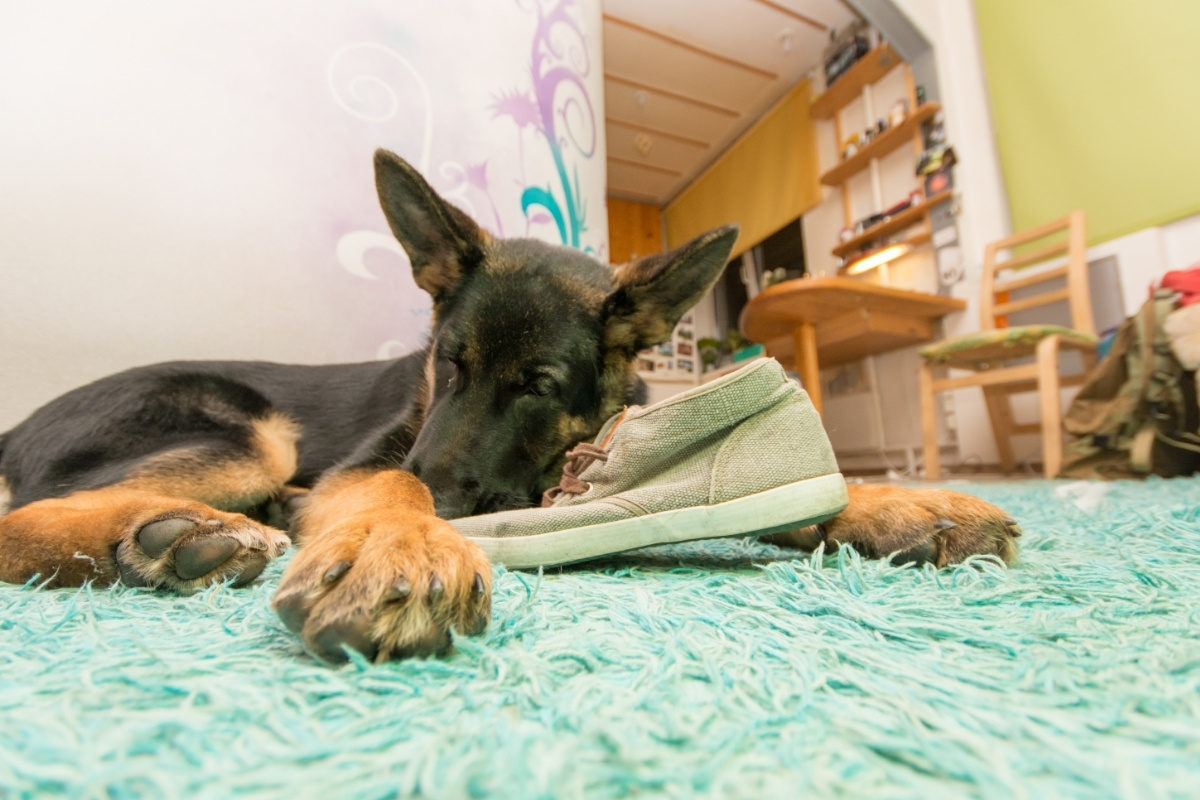
3. Boredom and Frustrations
If your German Shepherd is completely disengaged, minimally involved in exercise, or left to himself most of the day, he will surely find ways of keeping himself busy to break the boredom, and that could be destructive chewing.
Frustration can be triggered by factors such as an impatient owner who does not give their dog a chance during obedience training, extended disengagement, and experience with teasing kids, among others.
4. Attention Seeking
Attention-seeking is normal in dogs as long as it does not break boundaries. It is ok for your German Shepherd to lick your face if you haven’t given him a minute of attention for hours because you are busy working.
But extreme attention-seeking, like barking continuously in your face or chewing every piece of furniture in the home, is intolerable.
For example, if you shout and throw your hands in the air or pick the object being chewed and run so your dog chases you, your furry friend will have achieved his attention intent and will probably repeat it the next time you ignore him!
Instead, you need to train him out of it!
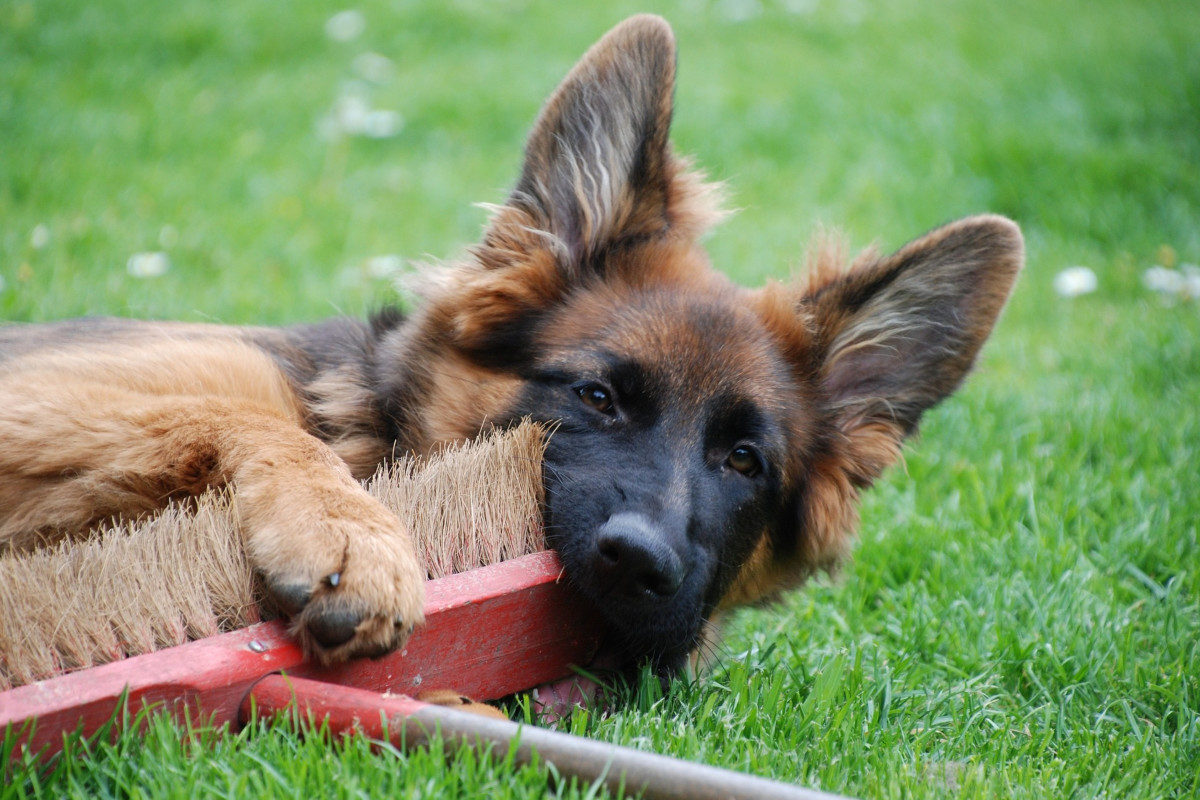
5. Medical Causes
If your German Shepherd does not get the required nutrients, he can develop a chewing disorder known as canine pica.
Don’t worry, though. I have a great article on the top nutrition for German Shepherds, where you can find loads of helpful advice on nutrition, types of diets, and what GSDs can and cannot eat.
This abnormal and persistent chewing of non-nutritional objects can also be caused by other conditions, including:
- Anemia
- Gastrointestinal diseases
- Medications such as prednisone
- Neurological diseases
- Diabetes
- Behavioral disorders such as anxiety
- A stressful home environment (an absent parent or competition for resources with other pets)
It’s important to rule out these possible causes of excessive chewing by visiting your German Shepherd’s veterinarian for a thorough physical exam.
The examination may include a fecal test for gastrointestinal parasites and blood tests for signs of anemia, diabetes, and pancreatic and liver diseases.
With the knowledge of the causes of destructive chewing in German Shepherds, it is easier to understand our steps for stopping your GSD from destructive chewing.
How to Stop Your German Shepherd From Destructive Chewing
Most solutions for stopping chewing in your German Shepherd directly derive from the causes.
In other words, try to understand why your dog is chewing. Here’s a super video from celebrity dog trainer Zak George, who explains both why dogs chew and, more importantly, how to stop destructive chewing:
Most behavior problems in German Shepherds are caused by a lack of exercise or boredom – or a combination of the two.
Let’s dig deeper into excessive chewing. Here are the steps for stopping your GSD from destructive chewing.
1. Dog-Proof Your Home
This is the most important tip in curbing destructive chewing in your German Shepherd.
If you did not teach your dog to understand the difference between chewing a toy and a pillow, it would be difficult to demand it from him as an adult.
Train him using positive reinforcement techniques where you reward him for displaying behavior that you like.
If you give your pet a delicious treat every time he does something you want him to do, then he is more likely to obey when you command.
While he’s still a puppy, discourage your German Shepherd from chewing valuable or dangerous objects in the home. Do this by dog-proofing your home using the following measures:
- Once you bring home your new German Shepherd puppy, supervise his movements in the house to ensure he does not chew on things that are out of bounds for him.
- Teach your GSD to differentiate between what he can chew and what he can’t, and do not get amused if he tries to chew on an object he should not, such as your favorite shoe.
- Allow your dog into each room in your home, one at a time, and make him understand what he cannot use as a chew object.
These measures might take months to be assimilated fully. But you must have the patience and discipline to make your German Shepherd learn them if you do not want your dog to exhibit excessive chewing later in life.
Remember that your German Shepherd needs rules that are consistent and don’t confuse him. This makes him feel more confident, calm, and less stressed, which is basic for preempting destructive chewing in adulthood.
The whole purpose of this website is to help you avoid making some of the mistakes I made when raising my German Shepherd puppy, Willow. As my first dog, I certainly made a few, and here is a classic:
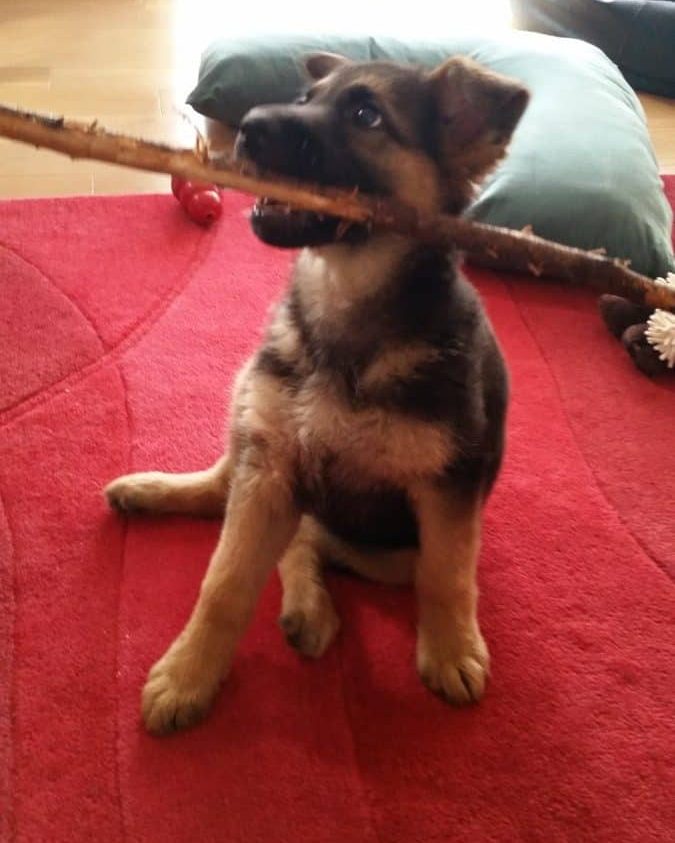
As a young pup, I allowed her to bring a stick inside the house whilst I took some cute photos! This only confused her into believing it’s ok to take sticks into the house and chew them! Doh!
2. Redirect Destructive Chewing to Chew Toys
As indicated earlier, chewing is a natural need in dogs and should not be eliminated. Instead, destructive chewing should be prevented or corrected through training.
Experts in canine care suggest that redirecting your dog’s tendency to chew valuables to chewing toys offers healthy alternative stimulation and enhances your dog’s welfare.
Also, these toys should be rotated often to avoid habituation, which could lead them back to chewing what they are not supposed to.
According to Preventive Vet, you should evaluate your GSD’s chewing behavior to determine its type of chewer. This will help you decide on the best chew toys for your dog.
Dogs can belong to one of the three types of chewers, and each has some recommended types of toys, as shown below. The recommended toys are from Amazon and are ones that I personally like.
| Type of chewer | Best toy types | Recommended |
| Inhalers/Gulpers: Bite large pieces of edible toys and swallow | Rubber Toys Stuffed Toys Rope Toys Tennis Balls | Petstages Dog Chew Toys KONG – Classic Dog Toy |
| Destroyers: Destroy everything they get their mouths on and may swallow or not swallow them | Rubber Toys Edible Chews & Treats | Benebone Real Bacon Durable Wishbone KONG Extreme Dog Toy |
| Nibbler: Savor chews and toys without hurry | Rubber Chew Toys Stuffed Toys Rope Toys Edible Chews & Treats Tennis Balls | Nylabone Big Chew Chew Toy |
Note: Clicking the above link(s) will take you to Amazon or an online store where we have an affiliate relationship. If you make a purchase, we may earn a commission at no additional cost to you.
Remember that your German Shepherd should not chew toys all day, which can become another behavior problem. Instead, give chew toys when your dog shows signs of putting his mouth on what he should not.
Your German Shepherd’s other time of the day should be occupied with exercise, play, sleep, and time to connect with you.
Other chewing considerations:
Edible chews are a good alternative to mix things up a bit for your GSD. However, these don’t last very long, but I like to give them to my German Shepherd to reward good behavior.
Edible chews for teeth cleaning are also ideal, and my GSD loves Dentastix from Amazon, especially the variety pack.
Pro Tip! Avoid rawhide chews, as these can be dangerous for some dogs. Many dogs can enjoy them safely; however, if your dog tends to bite off chunks rather than chew, bits of rawhide can get lodged in its windpipe or stomach, causing it to choke or have a digestive blockage. I prefer alternatives to rawhide, but it really does depend on your dog.
Pro Tip! Also, avoid antlers as they are too hard and can damage or crack your German Shepherd’s teeth. This interesting study investigated the effects of giving the horn of a calf hoof as a chew. The resulting finding was that although the hooves provided a positive experience for the dogs as a chew, they should not be given to prevent tooth lesions.
Pro Tip! You can give your German Shepherd a bone to chew on, but make sure you never give cooked bones as they can easily splinter, causing damage to your GSD’s mouth, throat, or digestive tract. Bones should be larger than the length of your dog’s muzzle, making them impossible to swallow whole.
Read More: 15 Best Chew Toys For German Shepherds.
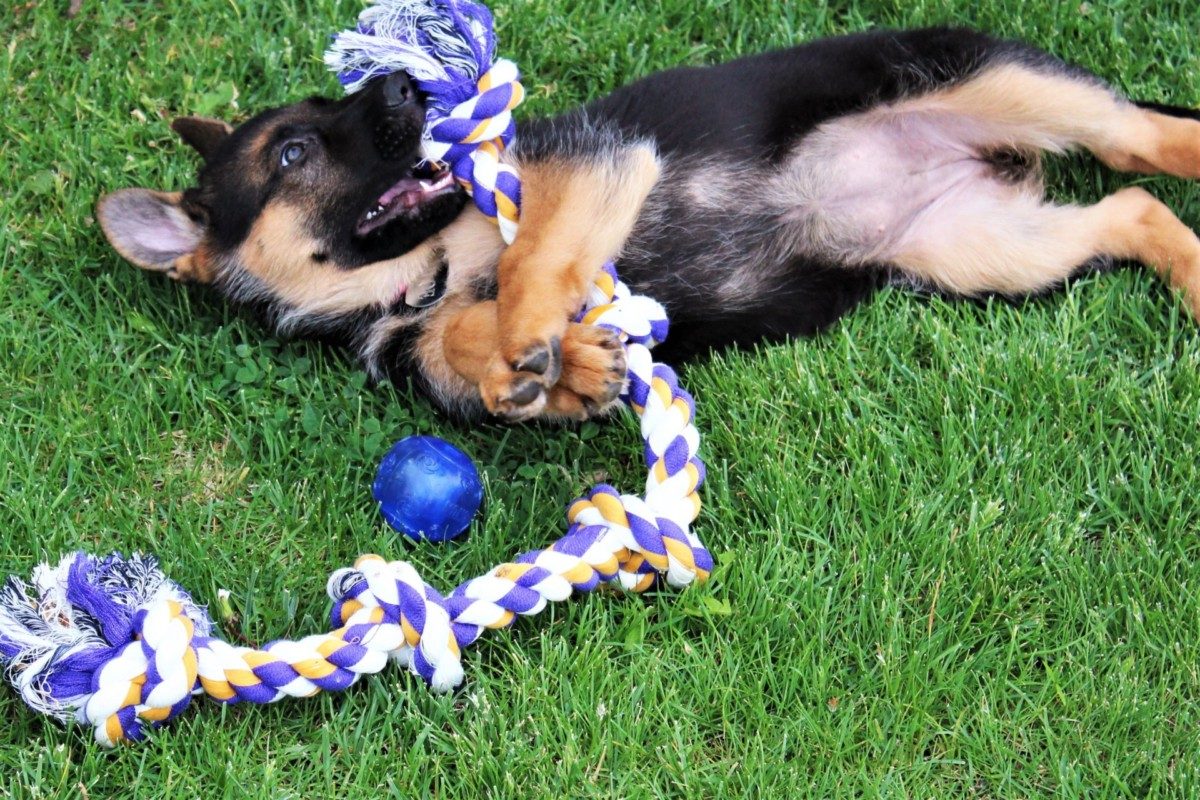
3. Train Your GSD to Obey Anti-Chew Commands
Even with the best of training, your German Shepherd Dog will try his luck with chewing things he shouldn’t once in a while, such as the leg of your wooden kitchen table!
Using anti-chew commands is important in deterring your dog from destructive chewing when you notice his attention to a non-chew object, such as wooden furniture in your home.
If the obedience command you use when you want to stop a behavior in your German Shepherd is “leave it!” use that to deter your dog’s temptation to chew what he should not.
Alternatively, you can generalize the “LEAVE IT!” command by presenting your dog with the valuable object he tries to chew (say a shoe) and repeating the command when he puts it in his mouth.
Reward your dog with a treat, his favorite chew toy, or a “GOOD DOG” praise every time he heeds the command to ensure he understands that not chewing the shoe is what is expected of him.
4. Keep Your German Shepherd Well-Exercised
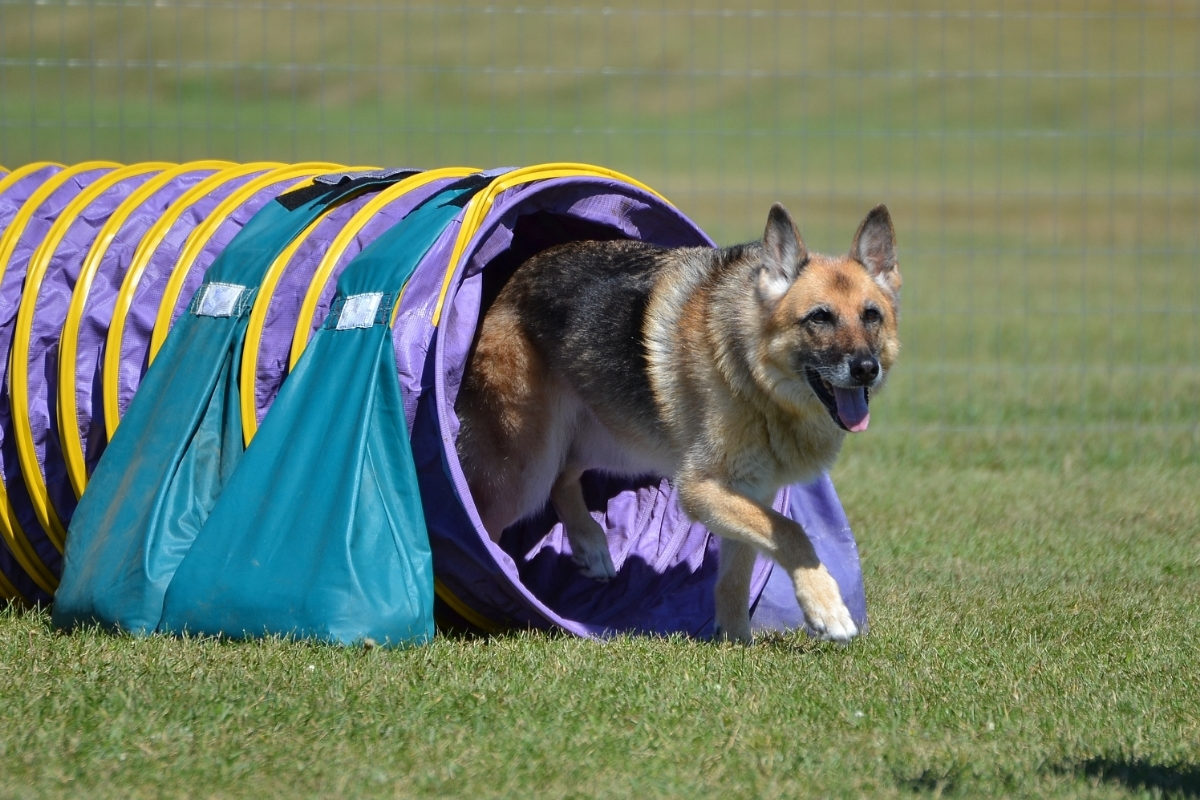
As a high-energy and extremely smart dog, an adult German Shepherd requires plenty of mental and physical stimulation with at least 2 hours of exercise daily.
This can be distributed between a morning and evening walk and the play and training exercises during the day.
If your German Shepherd is under-exercised, his high energy and smartness must be directed to other outlets.
He will also feel bored and frustrated, resulting in destructive behavior, which could include excessive chewing.
Research on dog anxiety found that those who had little daily exercise as puppies were more prone to separation anxiety and noise sensitivity when compared to those who had the recommended amount of daily exercise.
5. Do Not Offer Old Possessions As Chew Alternatives
Some dog owners think it is ok to offer their German Shepherd old shoes, rags, or cast-off clothes to chew instead of the valuable ones still in use.
Wrong thinking!
If you give your dog an old shoe to chew, you reinforce his preference for chewing shoes.
Once the old shoe is all destroyed and no longer good to chew, your German Shepherd will look for your latest purchase to replace the consumed one!
Dogs are dogs, and they do not know the difference between an old shoe and a brand-new one!
6. Consider Safe Dog Anti-Chew Deterrents
If your German Shepherd is chewing valuables, consider using safe anti-chew dog deterrents.
These use an aversive association mechanism: Your dog will associate the object with the deterrent, which has an awful smell or taste, labeling it “not good” for chewing.
Follow these steps to create the aversive association:
- Apply a small amount of deterrent to a piece of cotton wool or tissue and place it on your German Shepherd’s mouth (for taste) or his nose (for smell). Your dog will shake his head, retch, or drool if he finds the smell/taste appalling and, hence, create the aversive association.
- Spray the appalling deterrent on the objects you want to keep your dog from chewing.
- Reapply the deterrent daily for 2-4 weeks so that your dog permanently associates the object with the smell or taste.
Note that coupling the deterrent with another form of training that redirects your German Shepherd to chew permitted objects, such as KONG toys, will be more effective in making your dog cease chewing your valuables.
Some of the anti-chew deterrent tastes/odors you could consider include those with a bitter apple/lemon flavor, apple cider vinegar, or cayenne pepper.
However, be careful with the latter, as although the pepper is not harmful to your dog if swallowed, it may irritate his eyes if he gets it on his paws and then rubs his face.
Also, you must supervise your German Shepherd when you use a deterrent for the first time. Some dogs can be daring and brave against bad odors or tastes to get what they want!
Ensure you use alcohol-free deterrents that are safe for your dog and valuables and non-staining. If using a homemade deterrent, ensure you know which foods are poisonous to your German Shepherd.
For an easy option, you may want to try Grannicks Bitter Apple Taste Deterrent, which is pretty popular.
7. Contain Your Dog When He is Alone
If you have to leave your German Shepherd dog home alone, your best bet is to contain him in his cage. Most dogs love their crate and see it as their special place where they can go to relax or sleep after a good exercise session.
I like dog crates with double doors, such as the Midwest Homes for Pets iCrate from Amazon. They give you more options when deciding where in your home to place it, but this one also has a single-door option.
Make sure you choose a size 48″, as this gives your GSD plenty of room to move around and stretch out comfortably. You may want to leave him two or three toy chews to keep him busy.
If you don’t have a crate, you can keep him contained in either one room of the house or segregate an area using baby gates or a dog pen.
Alternatively, hire a dog walker or professional trainer to occupy your dog at least for some of the hours that you’ll be away. Your GSD should be caged for the rest of the time.
Remember that the maximum number of hours you should leave your dog in a crate is four.
More than that is considered extreme, and your dog may even turn to self-destructive behavior like biting himself or chewing his crate to the point of hurting his teeth and mouth.
8. Maintain Your Dog’s Annual Vet Schedule
I indicated earlier that destructive chewing could be caused by medical conditions such as anemia, diabetes, or gastrointestinal diseases.
To ensure your German Shepherd does not suffer from these conditions and turns to extreme chewing as a consequence, stick to your dog’s annual vet visit schedule.
This allows for early diagnosis and treatment should your GSD be suffering from any of the conditions.
Suppose the medical condition is psychological, like in anxiety, working with a behavioral therapist is advised.
However, in all cases, ensure that your dog has a proper professional diagnosis before initiating any treatment or therapy.
Final Thoughts
Chewing is a normal and instinctual exploratory behavior in German Shepherds and all dog breeds. This means that you should not try to eliminate it. Dogs chew to find relief from teething discomfort or strengthen their teeth and jaws.
When chewing is constant, targets valuables, and causes harm to your German Shepherd, it becomes abnormal and destructive and should be stopped.
Abnormal chewing in German Shepherds can be caused by poor training in puppyhood, anxiety, insufficient exercise, boredom and frustration, attention-seeking, and predisposing medical conditions.
Training, offering toys as alternative chew objects, keeping your dog well-exercised, using anti-chew deterrents and commands, keeping your dog in his cage when you are away, and following your GSD’s annual vet schedule are all effective ways to stop your German Shepherd from chewing.





